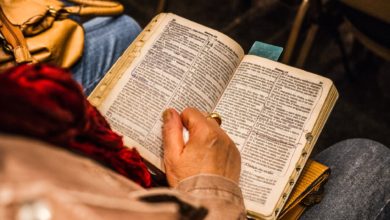Commentary: Continuing to Explore Caesarea Maritima
So after viewing the Pilate stone from last week, we watched an amazing film regarding the construction of Caesarea Maratima, and at this point, we walked into one of the highlights of ruins of this the port city: an immense and well preserved Roman amphitheatre.
What is the story behind this amazing place?
In the years 21 to 6 B.C. Herod the Great, called “great” because of his massive building projects, transformed the coastline 65 miles northwest of Jerusalem into one of his most impressive building accomplishments ever. He named it “Caesarea” in tribute to Caesar Augustus, and “Maritima” to distinguish it from Caesarea Philippi in the north.
The success of this project depended on new engineering feats like hydraulic concrete which would dry underwater, which was used for the first time at Caesarea. It is difficult to overstate the enormity of Herod’s accomplishment in building Caesarea Maritima.
But Caesarea Maritima had a problem; there were no springs or fresh water on the coastline. So Herod’s engineers built a raised canal, an aqueduct, that brought the water from the southern side of Mount Carmel, 6 miles away, where we will be visiting in a few hours.
A second aqueduct was built by the Legions of Emperor Hadrian, and the aqueduct was doubled in width.
By opening up shipping trade to Israel, Caesarea became a source of great wealth for King Herod and the kingdom of Isreal. At Caesarea, Herod built a bathhouse, theatre, various temples, a hippodrome and governmental buildings in the Hellenistic Greco-Roman style.
The city was laid out according to other major Roman cities, including paved streets and sophisticated water and sewer systems which we still get to see (or actually still sit on) today.
 One thing that is always shocking to people is the rounded, evenly spaced stones, that are in the walkway between the palace ruins and that of the hippodrome; the public horse racing theatre. These were part of the public bathrooms of the first century. A person would come by, hike up their robes and publically do their business. As a way to make an income, lower class citizens would stand by with a pail, and a stick bearing a sponge as a service to those using the bathroom.
One thing that is always shocking to people is the rounded, evenly spaced stones, that are in the walkway between the palace ruins and that of the hippodrome; the public horse racing theatre. These were part of the public bathrooms of the first century. A person would come by, hike up their robes and publically do their business. As a way to make an income, lower class citizens would stand by with a pail, and a stick bearing a sponge as a service to those using the bathroom.
Just after Herod the Great died, and his son Archelaus was deposed in 6 A.D., Judea became a Roman province. Herod’s palace became the residence of the Roman governor. The governor normally traveled to Jerusalem only during the Jewish feasts of Passover, Pentecost, and Tabernacles to ensure peace through his presence.
This is why Pontious Pilate, the governor of Judea from 6-41 A.D. was in Jerusalem Passover week as Jesus Christ was arrested by the Jews, brutalized, crucified by Pontius Pilate’s order, died and rose again on the third day!
Not only that, but Caesarea was the home of Philip the evangelist and his four daughters, who were prophetesses. Paul stayed with them when he returned from his missionary journeys. It was at Philip’s home that a prophet named Agabus bound Paul’s hands and feet with his belt, foretelling how the apostle would be handed over to the Romans.
It was in Caesarea that the Book of Acts tells us of a Roman soldier and his household who believed in Jesus Christ and received the gift of the Holy Spirit. This event astonished the Jewish Christians but validated the fact that salvation was for all people.
It was in Caesarea that the apostle Paul was imprisoned for two years and preached to the last of the Herods, King Agrippa II, who said that if he were to listen any longer to Paul’s persuasion, he might become a Christian. It was from here that Paul was transferred to Rome where he would be imprisoned and eventually martyred between 62 – 64 A.D.
All of these things we know from the Bible and the stones that bear witness to God’s work!
During the Roman occupation, clashes between Jews and the Greco-Roman population became more frequent and intense. In 66 A.D. according to Flavius Josephus, the First Jewish Revolt began in Caesarea with the desecration of the Jewish synagogue and the massacre of 20,000 Jews in a single hour. This revolt culminated in the destruction of Jerusalem and sacking of the Second Jewish Temple. The gold and relics taken from the temple were used in the construction of the Colosseum in Rome.
 We know this because of the translation of a stone of the victory arch in Rome which reads: “The Emperor Caesar Vespasian Augustus had this new amphitheatre erected with the spoils of war. There is no doubt what war, given the time frame this was the sacking of Jerusalem,” said Cinzia Conti, the director of the restoration at the Colosseum.
We know this because of the translation of a stone of the victory arch in Rome which reads: “The Emperor Caesar Vespasian Augustus had this new amphitheatre erected with the spoils of war. There is no doubt what war, given the time frame this was the sacking of Jerusalem,” said Cinzia Conti, the director of the restoration at the Colosseum.
As the Roman empire was Christianized under Constantine, Caesarea became a major center of Christian scholarship in the 2nd and 3rd century. Well-known Christian fathers including Origen and Pamphilius resided here. It was here that Eusebius became both the first church historian and the first biblical geographer. The library at Caesarea was second only to that of Alexandria, and by the 7th century, it held over 30,000 handwritten works.
The city remained prosperous throughout the Byzantine period, until the Arab conquest of the land in 640 A.D. when the harbor fell into disrepair and began to silt up. With the arrival of the Crusaders, the city of Caesarea itself was restored, but the harbor continued in neglect. Throughout the 12th and 13th centuries, the city of Caesarea alternated between Christian Crusader and Moslem control, and it was during this time that a Crusader fortress was built by the French king, Louis IX, that we can still visit today.
Whew, what a big first stop, and it is just the beginning of the first day of our trip. Now we board the bus and travel north to Mount Carmel to hear the stones tell us the amazing story that happened there.
As we say at the conclusion of every adventure in the land:
Till next time…In Israel!



